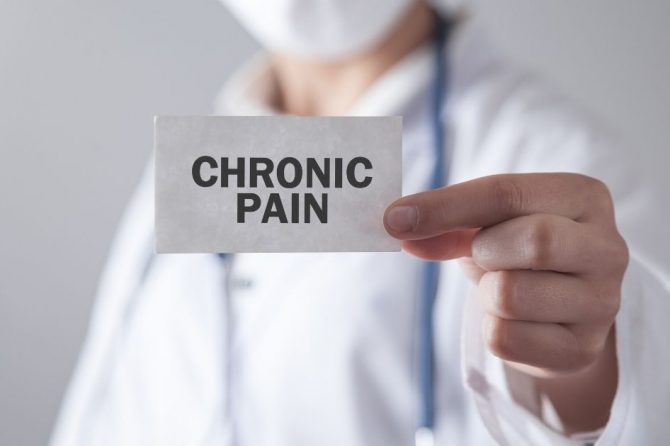
Physical Therapy for Chronic Pain
What is Chronic Pain?
Chronic pain by definition is pain or discomfort that lasts for more than three months or beyond a normal expected healing time. Pain can be annoying and irksome be it acute or chronic pain. Acute pain is an indication of tissue damage caused by injury, muscle strain, or illnesses. However, chronic pain may not just be an indication or warning of possible injury and danger, often neurological pain receptors in the brain may cause one to hurt without any new causes of pain occurring in the body. Chronic pain can be developed at any age and gender.
Chronic pain affects all parts of the body including the brain that puts the nervous system into a “high alert” mode making it more sensitive to pain. When in pain, the brain performs a thorough pain assessment determining the threat and the action required to prevent harm. When the body is under pain, the nervous system becomes more sensitive to make it easier for the brain to interpret sensations which worsens pain perception.
Let us understand acute and chronic pain with the help of an example. Imagine you accidentally smash your thumb with a hammer which causes sudden and severe pain. This is acute pain that causes sudden redness, swelling, and pain. Once your thumb heals, the pain goes away. However, if you smash your thumb with a hammer again, it may cause redness, swelling, and pain but this time the pain lasts long after the signs of injury go away. The damaged tissues heal but the pain still persists. The pain felt when you try to move your hand is chronic pain.
Causes and Symptoms

It is crucial to address the underlying cause of chronic pain. Certain health problems increase the risk for damage to joints and muscles which contribute to a loss of motion and buildup tension. The most common cause of chronic pain is the fear and anticipation of pain. Psychosomatic factors play a crucial role in chronic pain management. One may begin to fear pain worsening and avoid activity before chronic pain presents itself. Over-exertion results in body stiffness hampering your daily activities. Chronic pain results in muscle weakening, shrinkage from lack of exercise that increase the risk of falling and injury. Lack of activity decreases blood circulation causing deterioration of muscles and tissues. This causes fatigue and tiredness. Chronic pain conditions have mental health effects such as feelings of anxiety and depression. Chronic pain may cause dependency on prescription or over-the-counter medications to seek immediate and temporary relief.
Types of Physical Therapy Treatments
Various types of physical therapy treatments are available for chronic pain. It takes thorough analysis and trial-error to find the best treatment for you. Physical therapy, medication, supplements, chiropractic care, massage, acupuncture, exercise, meditation, and cognitive behavioral therapy are some effective treatments that can help relieve chronic pain. Physical therapy helps reduce pain, improve free range of motion, facilitate mobility, and enable complete functionality.
Strengthening Exercise
Exercise is the main physical therapy tool that aids in relieving chronic pain by providing strength and mobility to weakened muscles and restricted joints. When your brain receives signals of pain originating from different parts of the body, exercise acts as an output response to the input pain signals. It helps in reducing the fear associated with the movement of the affected area while training your sensitive nervous system to trust that the movement is safe.
Ultrasound Therapy
Unlike the usual ultrasound machine, ultrasound therapy involves a deep heating modality that propagated sound waves through damaged tissue improving blood flow and circulation. Ultrasound therapy can be used in conjunction with prescribed medicine mixed with ultrasound gel to increase the beneficial effects.
Manual Therapy
Manual therapy involves the application of skilled hand movements that aim at improving tissue extensibility, increase range of motion, facilitate joint mobilization and soft tissue mobilization, induce relaxation, change muscle function, and reduce swelling, inflammation, and movement restriction. Various kinds of manual therapy are available depending on the type and severity of your ailments such as the Garston technique, massage therapy, IATSM, and much more.
Dry Needling
Dry needling may appear similar to acupuncture in the sense that both procedures involve the usage of stainless-steel needles but that is where the similarities stop. Dry needling is a newer form of physical therapy treatment that is employed by physical therapists to decrease painful muscle knots and trigger points to relieve pain and stress caused by strained tissues.
Benefits of Physical Therapy
Physical therapy is a safe, proven, and effective way of chronic pain management. Physical therapy treatment begins with a comprehensive pain assessment and evaluation of location, type, intensity, and the underlying cause of the chronic pain. Your physical therapist will map out how your pain behaves, presents, affects your life, and the factors that make it better or worse it. Factors such as range of motion, posture, strength, balance, and endurance are analyzed before coming up with the appropriate physical therapy treatment plan that caters to your specific needs. Physical therapy benefits include pain relief, extended range of motion, increased strength and endurance, and facilitate functional mobility.




